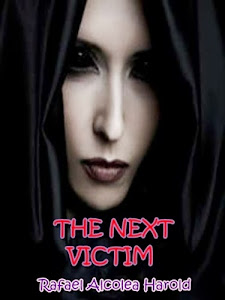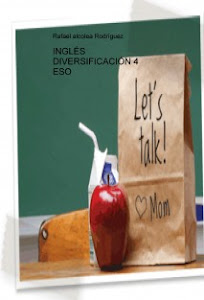
The annual Malaga fair in August is an exuberant week-long street party with plenty of flamenco and 'fino'(sherry).The fair commemorates the re-conquest of the city by Isabella and Ferdinand in 1487 and lasts for ten full festive days. It starts this Friday, 15th August till 24th August.
This castanet-clicking fiesta starts off with a bang, literally, with an impressive firework display in the park which can be seen for miles around. The best view is from the Port if you happen to be on a cruise ship or can persuade a sailor friend to drop anchor there for a few hours.
The following day the people take to the streets, the women in flouncy flamenco dresses, to dance, drink and, generally, make merry. The traditional dance of Andalucia is called 'Sevillanas' comprising four distinct dances with plenty of finger-clicking, foot-stomping and, above all, feeling. This is where 'dancing in the street' can be appreciated spontaneously 'en vida' which is really the only way Spanish dancing should be performed.
The Cordobes hats are for sale at the Malaga Fair.
This city fair is concentrated around Malaga's equivalent to London's Bond Street - Marques de Larios which is decorated with paper lanterns and flags and where horses replace cars as the means of transport. Millions of people visit the fair, although very few tourists seem to even know about this intrinsically Andalusian traditional fiesta which, in Malaga, is two distinct events, in the centre during the day and at the fairground from around 9 pm until dawn. The latter is an immense precinct where various associations install their 'casetas' - large booths for entertainment and refreshment, where old and young alike meet up in laughing gossiping circles, surrounded by swirling dancers and waiters rushing around tripping over babies and young children and making sure that everyone is continually topped up with fino and 'tapas'.
A good family day out.
The casetas are also where many business deals are struck between local Malagueños who have closed their conventional office for the week. Outside, the fair is a gaudy, raucous fairyland of dazzling lights, deafening music, soaring ferris wheels and careering dodgem cars, an assault on all the senses and incomparable to any 'conventional' fair elsewhere.
The Andalusian feria is celebrated in the majority of towns and even villages at some time between Spring and Autumn and for the locals means far more than a holiday from work. They are the very reason and justification for the year, occasions to be immersed in with passion and commitment. Some, like Malaga, Cordoba and, particularly Seville are rich and glittering affairs attracting millions of visitors while others, such as the feria of Casares is a far smaller version; an exuberant street party where everyone knows everyone and relatives who have moved away return to join their families in the all familiar annual celebration
There is patent rivalry between the two main Andalusian cities, Seville and Malaga – especially when it comes to festivities. In April, Seville boasts the illumination of something like 500,000 lights for the inauguration of the town’s massive annual fair. In true competitive spirit, Malaga strives to go one better and in 2004 it was reported that they nearly hit the half million mark – and so the one-upmanship goes on. This Festival of light by night is just one aspect of the ‘Feria de Málaga’. The inaugural night of the Fair is launched with the traditional ‘Pregón de la Feria’ (opening address) read out from the Town Hall balcony, followed, on the strike of midnight, by an awe-inspiring fireworks display. This ‘Big Bang’ is a magnificent show of Malaga’s muscle in the party prowess department and is best appreciated from Malaga Port, where thousands gather vying for a privileged view of this magical scene.
The Malaga skies are adorned with decorations.
The Feria celebrations date back to 1487, when Los Reyes Católicos, Isabella and Ferdinand re-conquered the city. Over time, it has evolved into a huge event and it has two distinct facets – day and night. ‘La Feria de día’ warms up around midday and cools off around 7 p.m. Hundreds of people take to the streets of the city’s historic centre, which are beautifully decorated and food, drink and trinket stalls are set up. Shops and businesses close and the classy pedestrian shopping street, Calle Marques de Larios, and surrounding area are transformed for the duration of the celebrations. Soak in the wall-to-wall swishing flamenco dresses, gleaming Andalusian horses, music and spontaneous dancing and you understand something of the Andalusian love of life and ability to party.
The essential female feria accessory, the Spanish Fan.
By night the place to be is the big purpose built Fair Ground, set just on the edge of the city. There are shuttle buses laid on from the centre of the city. From around 9.00 p.m. till dawn this massive purpose built fiesta area vibrates with life. Here, 21 st century technology mingles with old Andalusian traditions. From fairground rides, to live music and dancing and endless food, drink and entertainment, the choice is vast. If you do nothing other than people-watch, you will enjoy a sense of theatre when you see the stunning elegance and beauty of some of the women and men milling around or dancing traditional Sevillanas, till dawn.
A third choice is the sometimes shocking, but always spectacular selection of bullfights in the city’s bullring at La Malagueta.



This castanet-clicking fiesta starts off with a bang, literally, with an impressive firework display in the park which can be seen for miles around. The best view is from the Port if you happen to be on a cruise ship or can persuade a sailor friend to drop anchor there for a few hours.
The following day the people take to the streets, the women in flouncy flamenco dresses, to dance, drink and, generally, make merry. The traditional dance of Andalucia is called 'Sevillanas' comprising four distinct dances with plenty of finger-clicking, foot-stomping and, above all, feeling. This is where 'dancing in the street' can be appreciated spontaneously 'en vida' which is really the only way Spanish dancing should be performed.
The Cordobes hats are for sale at the Malaga Fair.
This city fair is concentrated around Malaga's equivalent to London's Bond Street - Marques de Larios which is decorated with paper lanterns and flags and where horses replace cars as the means of transport. Millions of people visit the fair, although very few tourists seem to even know about this intrinsically Andalusian traditional fiesta which, in Malaga, is two distinct events, in the centre during the day and at the fairground from around 9 pm until dawn. The latter is an immense precinct where various associations install their 'casetas' - large booths for entertainment and refreshment, where old and young alike meet up in laughing gossiping circles, surrounded by swirling dancers and waiters rushing around tripping over babies and young children and making sure that everyone is continually topped up with fino and 'tapas'.
A good family day out.

The casetas are also where many business deals are struck between local Malagueños who have closed their conventional office for the week. Outside, the fair is a gaudy, raucous fairyland of dazzling lights, deafening music, soaring ferris wheels and careering dodgem cars, an assault on all the senses and incomparable to any 'conventional' fair elsewhere.
The Andalusian feria is celebrated in the majority of towns and even villages at some time between Spring and Autumn and for the locals means far more than a holiday from work. They are the very reason and justification for the year, occasions to be immersed in with passion and commitment. Some, like Malaga, Cordoba and, particularly Seville are rich and glittering affairs attracting millions of visitors while others, such as the feria of Casares is a far smaller version; an exuberant street party where everyone knows everyone and relatives who have moved away return to join their families in the all familiar annual celebration
There is patent rivalry between the two main Andalusian cities, Seville and Malaga – especially when it comes to festivities. In April, Seville boasts the illumination of something like 500,000 lights for the inauguration of the town’s massive annual fair. In true competitive spirit, Malaga strives to go one better and in 2004 it was reported that they nearly hit the half million mark – and so the one-upmanship goes on. This Festival of light by night is just one aspect of the ‘Feria de Málaga’. The inaugural night of the Fair is launched with the traditional ‘Pregón de la Feria’ (opening address) read out from the Town Hall balcony, followed, on the strike of midnight, by an awe-inspiring fireworks display. This ‘Big Bang’ is a magnificent show of Malaga’s muscle in the party prowess department and is best appreciated from Malaga Port, where thousands gather vying for a privileged view of this magical scene.
The Malaga skies are adorned with decorations.

The Feria celebrations date back to 1487, when Los Reyes Católicos, Isabella and Ferdinand re-conquered the city. Over time, it has evolved into a huge event and it has two distinct facets – day and night. ‘La Feria de día’ warms up around midday and cools off around 7 p.m. Hundreds of people take to the streets of the city’s historic centre, which are beautifully decorated and food, drink and trinket stalls are set up. Shops and businesses close and the classy pedestrian shopping street, Calle Marques de Larios, and surrounding area are transformed for the duration of the celebrations. Soak in the wall-to-wall swishing flamenco dresses, gleaming Andalusian horses, music and spontaneous dancing and you understand something of the Andalusian love of life and ability to party.
The essential female feria accessory, the Spanish Fan.
By night the place to be is the big purpose built Fair Ground, set just on the edge of the city. There are shuttle buses laid on from the centre of the city. From around 9.00 p.m. till dawn this massive purpose built fiesta area vibrates with life. Here, 21 st century technology mingles with old Andalusian traditions. From fairground rides, to live music and dancing and endless food, drink and entertainment, the choice is vast. If you do nothing other than people-watch, you will enjoy a sense of theatre when you see the stunning elegance and beauty of some of the women and men milling around or dancing traditional Sevillanas, till dawn.
A third choice is the sometimes shocking, but always spectacular selection of bullfights in the city’s bullring at La Malagueta.
































No hay comentarios:
Publicar un comentario